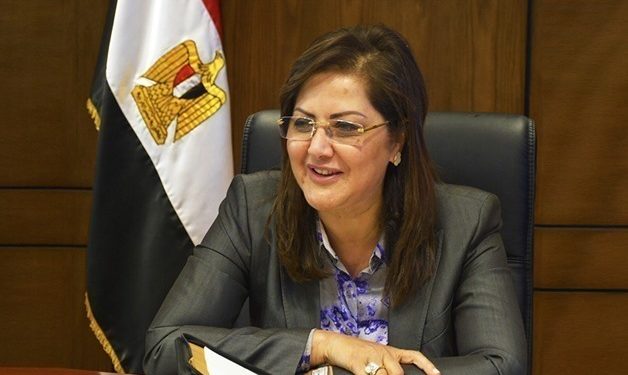Minister of Planning Hala el-Saeed presented the indicators of economic and social performance during the first quarter of 2019/2020 to Prime Minister Mostafa Madbouly.
Saeed said in a statement Wednesday that the economic growth rate stabilized during the first quarter of the fiscal year to reach 5.6 percent, which is one of the most important indicators during this period.
“Global growth rates are slowing and are expected to reach 3 percent in 2019, to reach 3.4 percent in 2020, due to several factors including oil price developments and rising trade barriers,” she said.
Saeed pointed out that the IMF projections on the prospects of the global economy indicate that the growth rates of the Egyptian economy will reach 5.9 percent in 2020.
On the sectoral contribution to economic growth, the minister noted that about 56 percent of the contribution to the growth of GDP during the first quarter comes from five sectors, internal trade, agriculture, real estate activities, industry, and telecommunications.
The telecom, construction, tourism, Suez Canal, gas and industry sectors recorded the highest growth rates during the first quarter of fiscal year 2019/2020.
“The Purchasing Managers’ Index (PMI) rose to 49.5 in September 2019,” she noted.
Regarding public investments, the minister stated that it amounted to about LE 87 billion in the first quarter of the fiscal year 2019/2020, with the growth of 9 percent, out of which LE 25 billion in government investments.
Saeed referred to the efforts exerted in the first quarter of the fiscal year 2019-2020 to implement “ADecent Life” initiative, pointing out that about LE 694 million of the total investment funds (LE 4.7 billion) allocated to the initiative were spent to implement a number of projects in the sectors of housing, transport, education, local development and irrigation, especially in the governorates of Assiut, Kafr El-Sheikh, Qena and Sohag.
The minister tackled the indicators of the labor market and unemployment, stressing that the unemployment rate in Egypt is better than that of comparative countries, where it dropped to 7.5 percent in the fourth quarter of 2018/2019, compared to about 9.9 percent in the corresponding quarter of the previous year.
“The sectors of construction, industry, transport, and warehousing are the highest contributor to the reduction of unemployment,” she added.
Moreover, the minister reviewed the development of population growth during the period (1976-2017). The minister underlined the need to control population growth, where the population is expected to reach 132.3 million people in 2030 if the current growth rate is constant (2.56 percent).
Regarding the annual inflation rate, the minister pointed out that it recorded 4.3 percent in September 2019, compared to 15.4 percent for the same month of the previous year, where the prices of meat and poultry decreased by 7.5 percent, fruit prices downed by 4.3 percent, and prices of vegetables dipped by 0.7 percent.
With regard to the development of exchange rates, Saeed highlighted a relative improvement in the exchange rate of the pound against the dollar, in addition to a decrease in interest rates, in conjunction with low inflation.
She pointed to the development of the non-oil trade balance performance during the first quarter of fiscal year 2019/2020, clarifying that the non-oil trade balance deficit decreased by 22 percent.
Saeed also noted that imports fell by more than 13 percent and exports rose by 5 percent during the first quarter of the current fiscal year.
The minister of planning explained that there is a slight rise in the trade balance deficit, which amounted to about $38 billion by the end of 2019/2018, noting that there is an increase in exports in 2019/2018 by 10.5 percent, reaching LE 28 billion; oil exports represent 43 percent of total exports.
Regarding the growth of foreign exchange sources, the minister stated that foreign exchange inflows from the main sources increased to about $78 billion in 2018/2019 compared to about $61 billion in 2007/2008, with a growth rate of 28 percent.
“Sustainable foreign exchange sources (exports, Suez Canal, foreign investment) represent about 52 percent of the total foreign exchange sources of the state,” she revealed.
On foreign exchange reserves, the minister explained that as the government adopted a policy of liberalizing the exchange rate and improving the balance of payments, foreign exchange reserves gradually increased to $45 billion in September 2019, compared to about $13.4 billion in March 2013 (the lowest level in 2013).
Egypt Today
30/10/2019
























































